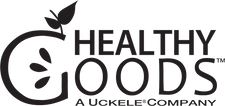Organic foods and products are the fastest growing items in America's grocery carts. Everyone has their own reason for buying organic, but at the top of the list is a desire to have safe, pure, and non-toxic foods and products in our homes and around our families.
What are Organic Foods?
Organic, as defined by the U.S. Department of Agriculture National Organic Program, is a "labeling term that indicates that the food or other agricultural product has been produced through approved methods that integrate cultural, biological, and mechanical practices that foster cycling of resources, promote ecological balance, and conserve biodiversity. Synthetic fertilizers, sewage, sludge, irradiation, and genetic engineering may not be used."
Buying organic foods means buying foods free from chemicals, pesticides, or genetically modified organisms, and that animals that produce meat, eggs, or dairy have not been given antibiotics or growth hormones.
Look for the Label
With the increase of consumer interest in buying organic, finding organic products in your local grocery store has bever been easier. Not all "organic" is created equal, however. The National Organic Program (NOP) has established guidelines to assure consumers of the exact organic content of the food they buy. This prevents unscrupulous labeling of less-than organic products.
The USDA Organic seal can be found on single-ingredient foods. Products that contain multiple ingredients can be a bit trickier. Here is how the USDA NOP handles these products, and allows the USDA Organic seal to be used.
• 100% Organic - Every ingredient is certified consistent with standards. USDA seal is allowed
• Organic - At least 95-99% of the ingredients are certified consistent with standards. The remaining ingredients have been approved by the NOP. USDA seal is allowed.
• Made with Organic Ingredients - Must contain 70-94% organic ingredients by weight. No seal is allowed.
The use of the USDA certified organic seal is voluntary, and small operations may elect not to go through the rigerous certification process. If you are shopping at a local farmers market or from a small, local business- go ahead and ask about their farming and/ or production practices. They may use organic methods and produce organic products, even if they do not have the certification seal.
The Dirty Dozen and Clean Fifteen
The organic process can often cost more for the farmers and producers of organic products, and that cost is usually passed on to consumers. Organic products can cost up to 20% more than their non-organic counterparts. (Organic farmers do not receive the federal subsidies that conventional farmers do, and the price of organic foods refelects the true price of growing food.) Many of us would like to purchase only organic foods, but have to make concessions for reasons of budget or convenience.
If we can only buy partially organic, what should we choose?
Although the EPA has been restricting the uses of the most toxic pesticides, they are still detected on some foods. For the past nine years, the Environmental Working Group has analyzed pesticide-testing data generated by the scientists at the USDA and FDA. Using their findings, the Environmental Working Group releases a list of the fruits and vegetables found in your local market that are most likely, and least likely, to be contaminated with pesticides. This list is referred to as The Dirty Dozen, and the Clean Fifteen.
The Dirty Dozen refers to the foods most likely to be contaminated with pesticides. This year, the EWG has expanded their dirty dozen to include two additional food crops that have raised special concerns over pesticide use. These are the fruits and vegetables that you should strive to buy organic whenever possible.
The Dirty Dozen Plus for 2013
1. Apples
2. Celery
3. Cherry Tomatoes
4. Cucumbers
5. Grapes
6. Hot Peppers
7. Nectarines (Imported)
8. Peaches
9. Potatoes
10. Spinach
11. Strawberries
12. Sweet Bell Peppers
Plus - Kale/ Collard Greens
Plus - Summer Squash
The Clean Fifteen are the fruits and vegetables least likely to be contaminated with pesticides. These foods are typically safe to purchase when conventionally grown, as opposed to their "dirty" counterparts.
The Clean Fifteen for 2013
1. Asparagus
2. Avocados
3. Cabbage
4. Cantaloupe
5. Sweet Corn
6. Eggplant
7. Grapefruit
8. Kiwi
9. Mangoes
10. Mushrooms
11. Onions
12. Papayas
13. Pineapples
14. Sweet Peas (frozen)
15. Sweet Potatoes
You can find the full list of 48 popular fresh produce items from the EWG here.
Live Superfoods: USDA-Certified Organic Foods
Live Superfoods owns and operates a USDA-certified organic packaging facility. We purchase high-quality, exotic, nutritious superfood ingredients from around the globe, then package them right here in Central Oregon to sell directly to our customers.
Our ingredients come from farmers and processors on over 5 different continents that share our passion for healthy, pure food and sustainable practices.
Our Live Superfood brand products go even further then just organic certification. Our facility is also certified Kosher, and our foods are vegan, and raw. We believe in nutrient-dense food with a preserved enzymatic life force intact.
Our third-party products must also pass our "purity" test, and we hand select manufacturers and products that are USDA Certified-organic, Kosher, Vegan, and/ or Raw. We don't stop at foods, either. Live Superfoods offers organic personal care products, and organic products for your home.

